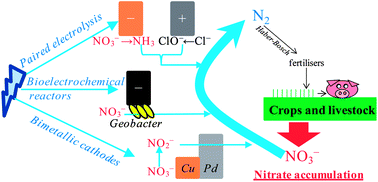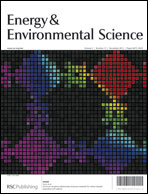Powering denitrification: the perspectives of electrocatalytic nitrate reduction
Abstract
Imbalances in the nitrogen cycle caused by human activities (combustion, fertiliser-intensive agriculture) have resulted in alarmingly increased levels of nitrate in groundwater and other water bodies, with potentially health-threatening consequences. The electrocatalytic removal of nitrate from polluted water is a promising alternative to bacterial denitrification, provided that full selectivity to harmless N2, which can be returned to the atmosphere, is achieved. This perspective article discusses the state-of-the-art of research on electrocatalytic denitrification, critically evaluating the obstacles still hampering large-scale application of this technique. The milestones of fundamental research focussing on the cathode reaction will first be dealt with, followed by their translation into electrochemical reactors of practical interest. Finally, a short foray into the novel field of bioelectrochemical reactors will close the article. Challenges and opportunities pertaining to these three topics will be analysed.


 Please wait while we load your content...
Please wait while we load your content...